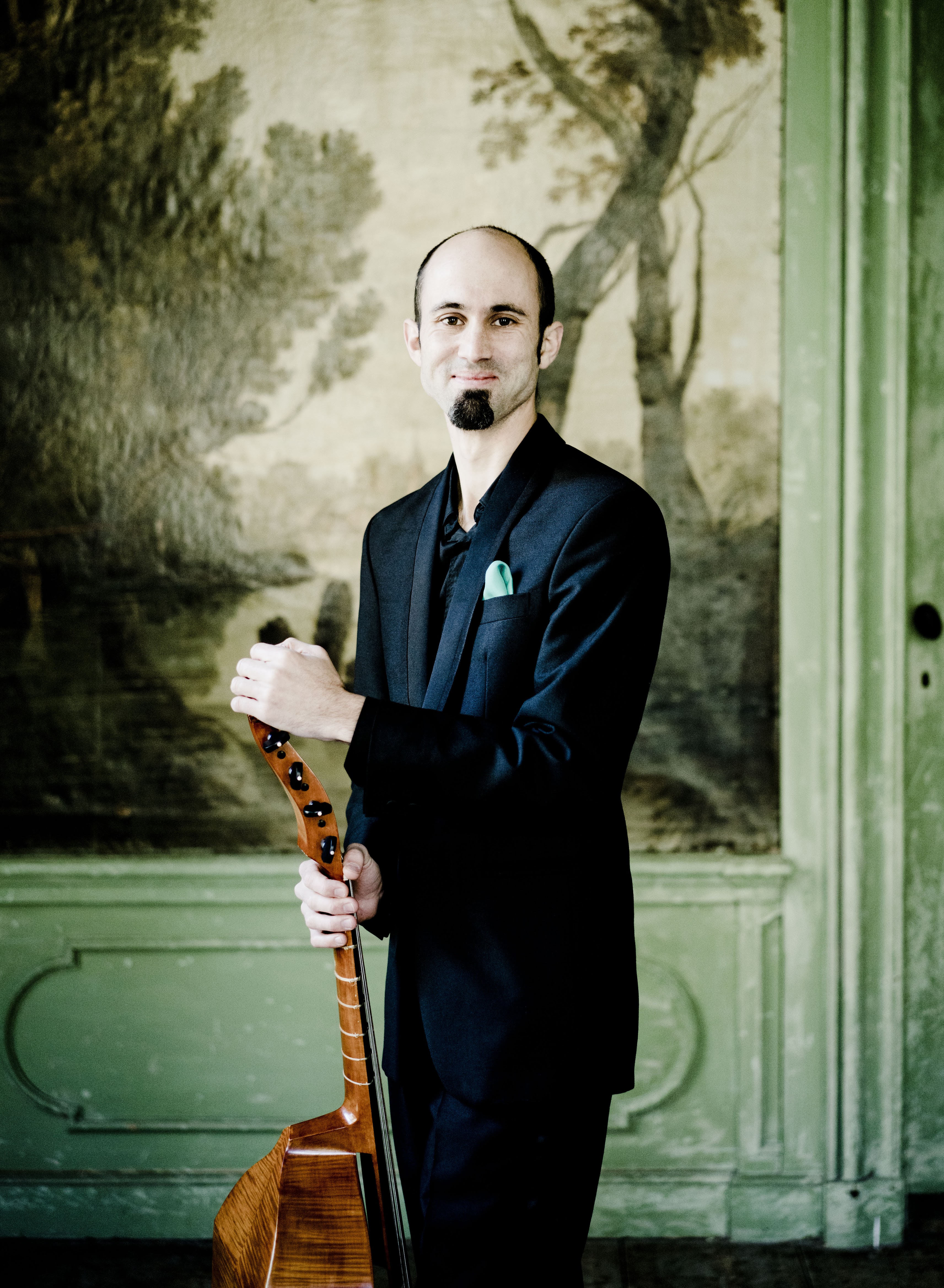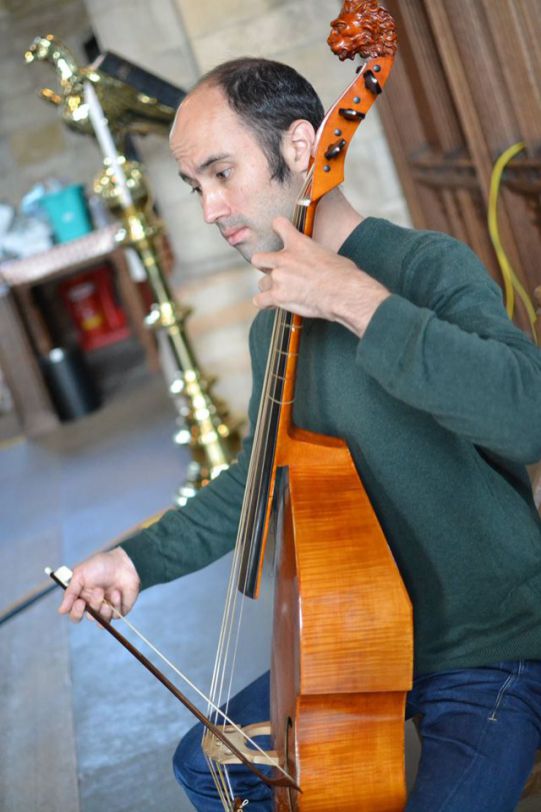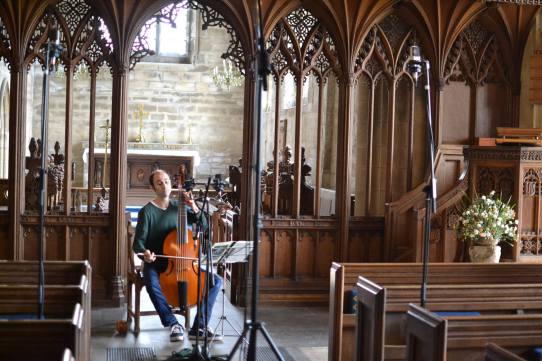Robert Smith – gamba: Telemann’s Fantasieën voor viola da gamba
3 september 2017 | 16.45 uur
| Museum het Cromhouthuis, Amsterdam

In het Telemann-jaar 2017, brengt gambist Robert Smith de twaalf, pas onlangs, in 2015, ontdekte, Fantasieën voor viola da gamba van Telemann uit op CD. Vanmiddag worden delen van deze lang verloren gewaande muzikale schat uit Telemann’s Fantasieën-repertoire, ten gehore gebracht.
Opium Radio 4
Op 11 augustus was Robert Smith te horen in Opium op Radio 4, waarin hij het spannende verhaal vertelde rond deze opzienbarende vondst en op 3 september behoort u tot de gepriviligeerden om zijn verhaal en spel persoonlijk mee te maken.
In Robert’s eigen woorden:
‘A treasure lost and finally rediscovered! Telemann (1681-1767) wrote fantasias for solo instruments between 1732 and 1735. The impressive fantasias for violin and flute are well known and loved almost three centuries after they were first published. But the viola da gamba fantasias were lost! We knew they existed from adverts in newspapers of the time, but they always remained a holy grail for viola da gamba players. That was until 2015 when they were discovered in the private archives of Ledenburg Manor, near Osnabrück in Germany, which led to their publication in 2016.
Robert Smith – barokcellist & viola da gamba
Robert Smith is een Engelse barokcellist en gambaspeler. In 2012 won hij de Eerste Prijs, Publieksprijs én Bijzondere Prijs van de Bach-Abel Viola da Gamba Competition in Köthen. Zijn uitvoering van een heavy metal transcriptie viel in het bijzonder op. Roberts ensemble, Fantasticus ontving veel bijval voor de recente opnames van stylus fantasticus-werken en Franse barokmuziek. In 2013 omschreef The Strad zijn spel als “intensely expressive, highly dramatic.” Zijn debuut solo cd, Tickle the Minikin, was BBC Instrumental Choice in September 2014. Een nieuwe CD, The Excellency of Hand, is een ontdekking van Engelse viola da gamba duos samen met gamba-virtuoso Paolo Pandolfo. Straks in 2017 komt van Robert een van de eerste opnames van de recent-ontdekte Telemann Fantasias voor solo viola da gamba.
Robert studeerde Viola da Gamba bij Mieneke van der Velden (Amsterdam) en Paolo Pandolfo (Basel). Hij studeerde ook barokcello bij Wouter Möller, Jaap ter Linden en Viola de Hoog. Hij was aanvoerder van de celli van het European Union Baroque Orchestra in 2005/6 en speelt nu onder meer met Amsterdam Baroque Orchestra en ensemble Fantasticus. In 2010 won hij de tweede prijs in de Internationale Baroque Soloists Competition in Brunnenthal, Oostenrijk. Als ensemblelid ontving hij meerdere prijzen in de Internationale Wedstrijd Musica Antique Brugge en het Van Wassenaar Concours (Amsterdam).
Opname van Telemann’s Fantasie nr. 6 Scherzando:
https://www.youtube.com/watch?v=Df0f5Ui9OVg
CD introductory text on Telemann’s 12 Fantasias:
Amongst his many hundreds of compositions in many different styles and settings, Telemann wrote sets of fantasias for four solo instruments – harpsichord, flute, violin and viola da gamba. The 36 fantasias for harpsichord, and 12 for flute were published in 1732-33. In 1735 Telemann published 12 fantasias each for violin and viola da gamba. Typically for the commercial strategy of his own “Telemann Publishing”, the fantasias for viola da gamba were published two at a time on a fortnightly basis in a sort of “collect them all” action.
The fantasias for flute and violin especially have remained popular to this day – the varied and short movements provide compact musical messages that delight and refresh performers and listeners alike. The fantasias for viola da gamba however were lost until 2015 when they were rediscovered in the collection of Ledenburg Manor held at the Lower Saxony State Archive in Osnabrück. Until that point all that remained were tantalising newspaper announcements from the time advertising the forthcoming release of the fantasias.
I personally felt it was sad and perhaps even unfair for viol players that “our” set of fantasias were lost. Anyone who had played or heard the sonata for solo viola da gamba from Der Getreue Music-Meister in D major, TWV 40:1, got a sense of the way in which Telemann could write originally and idiomatically for the instrument. The sonata, published in 1729, is 5 movements long and features beautiful melodies, athletic allegros, self-accompanied recitativo and chromatic counterpoint. Knowing the pleasure of playing this sonata most certainly leaves one hungry for more!
And then in 2015 something happened that viol players dreamed about but perhaps never expected would happen: a complete copy of the 12 fantasias was discovered. The manuscript was released to the public in 2016 and we could ask some important questions. Is it good music? Does it fit well on the instrument? Is it written for professionals or amateurs? Is it more in a harmonic or melodic style? How does Telemann let the viola da gamba be both accompaniment and soloist at the same time? And by opening up the manuscript and playing through, the questions began to be answered.
There is something magical about learning a newly discovered score. It is a direct and pure link to the past, between the performer and Telemann. There are no conscious or unconscious memories to cloud our interpretation, no favourite recordings, no performance traditions, no influences from a masterclass with a great professor. This clean slate is something very seldom and worth cherishing. Compare this to interpreting the cello suites by J.S. Bach – with eighty years of recordings made and a cellist’s musical education full of lessons and masterclasses it can be hard to find one’s own voice and personal relationship with Bach.
The 12 fantasias are in 12 different keys and mostly contain three movements. The last, binary, movement of each Fantasy tends to be the most light-hearted and dance like, acting as a digestive to the weightier material that comes before. Reading through the score for the first time I became yet more convinced with each fantasy that the music was indeed very good and incredibly varied. The opening notes of Fantasy No.1 in C minor set a very serious tone giving way to a densely woven chromatic counterpoint, geniously inverted in the second half of the movement. The Fantasy No.2 in D major by contrast is an explosion of joy, the large leaps of the opening Vivace creating space and transparency. The Largo of Fantasy No.3 in E minor is filled with yearning by the figure of the rising 6th. And so each fantasy progresses, each time surprising us with new characters, new structures and new compositional devices such as the fugal and canonic writing in Fantasies 1,3,5,7,9,and 11 – the Presto of Fantasy 9 is notable for its long theme and chromaticism.
The style of writing for the instrument is most definitely forward looking with melodic writing, or jeu d’melodie gaining the upper hand over jeu d’harmonie, or chordal playing. Harmonic progressions are more often implied through skipping melodies rather than use of chords outright. This is a move away from the dense sequential chords found in earlier germanic viola da gamba music and the fantasias nestle stylistically between Schenck’s Opus 9 of 1710 and Carl Friedrich Abel’s solo pieces from later on in the century.
As with many new discoveries, the suggestion has already arisen that these fantasias may not be by Telemann, but rather by a contemporary or one of his students (see German early music magazine, Concerto, No. 268). This theory however, based on personal feelings rather than substantiated evidence, has not gained much traction either in the musicological world or with me. Judging from my own experience, the way the motifs in these fantasias fit together and the work that one has to do to successfully bring out all the rhetorical devices contained within them is very similar to what is needed for other compositions by Telemann. It is perhaps this way of working, rather specific to Telemann, that convinces me most that these works are indeed genuine.
The fantasias would have been approachable by good amateurs of the time – they were after all the intended target of Telemann’s own publication. It would be wrong however to think that this music is easy for professionals. Dealing with rapid changes of register and contrapuntal writing whilst keeping the character of the music are some of the big challenges on offer.
Perhaps Telemann’s talent lies partly in his ability to write music for the amateur market that never ceases to challenge great virtuosos.
Robert Smith is an English baroque cellist and viola da gambist. In 2012 he won the Bach-Abel Viola da Gamba Competition in Köthen, taking the 1st Prize, Audience Prize and Special Prize. His performance of a heavy-metal transcription was especially noted. Robert’s ensemble, Fantasticus, has received wide critical acclaim for its recent recordings of stylus fantasticus and French baroque music. In 2013 his playing was described by The Strad as, “Intensely expresive, highly dramatic.” In 2014 Robert released his first solo recording of music for viola da gamba, ‘Tickle the Minikin’. The recording received many enthusiastic reviews and was BBC Music Magazine’s Instrumental Choice in August 2014. In 2017 Robert released “The Excellency of Hand”, a recording of virtuoso English viol duos with his former teacher, Paolo Pandolfo. Robert lives in Amsterdam.
De Geelvinck Salon maakt dankbaar gebruik van de SKIP-regeling van het Fonds voor Podiumkunsten.
Locatie
Museum het Cromhouthuis
Het Cromhouthuis vertelt het verhaal van de roemruchte familie Cromhout, die bijna twee eeuwen lang de panden aan de Herengracht 366-368 bewoonde. Hun huizen zijn vandaag de dag nog net zo imposant en fraai als destijds in de Gouden Eeuw. Het Bijbels Museum bevindt zich op de bovenste verdiepingen.Lees verder





